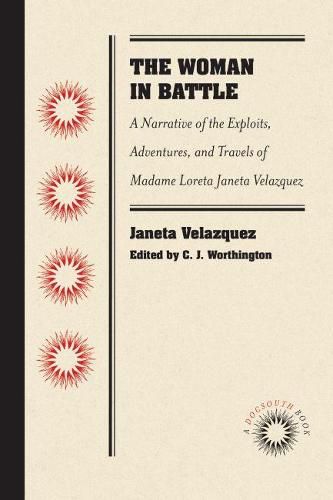Readings Newsletter
Become a Readings Member to make your shopping experience even easier.
Sign in or sign up for free!
You’re not far away from qualifying for FREE standard shipping within Australia
You’ve qualified for FREE standard shipping within Australia
The cart is loading…






Loreta Janeta Velazquez was the daughter of a Spanish official living in Cuba. As a young girl she was sent to school in New Orleans, where she ran away and married a U.S. Army officer. After the outbreak of the war, she persuaded her husband to renounce his commission and to join the Confederate forces. After he was killed in battle, Velazquez disguised herself as a man so that she could serve, eventually doing so as an officer, a spy, and a blockade runner. The Woman in Battle tells the amazing story of Velazquez’s experiences in a male-dominated world, offering a unique perspective on life as a soldier and detailing her many adventures, including fighting in the First Battle of Bull Run and Shiloh, where she was allegedly wounded. Upon the book’s publication in 1876, its veracity was questioned, and it continues to be debated by contemporary historians to this day.
$9.00 standard shipping within Australia
FREE standard shipping within Australia for orders over $100.00
Express & International shipping calculated at checkout
Loreta Janeta Velazquez was the daughter of a Spanish official living in Cuba. As a young girl she was sent to school in New Orleans, where she ran away and married a U.S. Army officer. After the outbreak of the war, she persuaded her husband to renounce his commission and to join the Confederate forces. After he was killed in battle, Velazquez disguised herself as a man so that she could serve, eventually doing so as an officer, a spy, and a blockade runner. The Woman in Battle tells the amazing story of Velazquez’s experiences in a male-dominated world, offering a unique perspective on life as a soldier and detailing her many adventures, including fighting in the First Battle of Bull Run and Shiloh, where she was allegedly wounded. Upon the book’s publication in 1876, its veracity was questioned, and it continues to be debated by contemporary historians to this day.